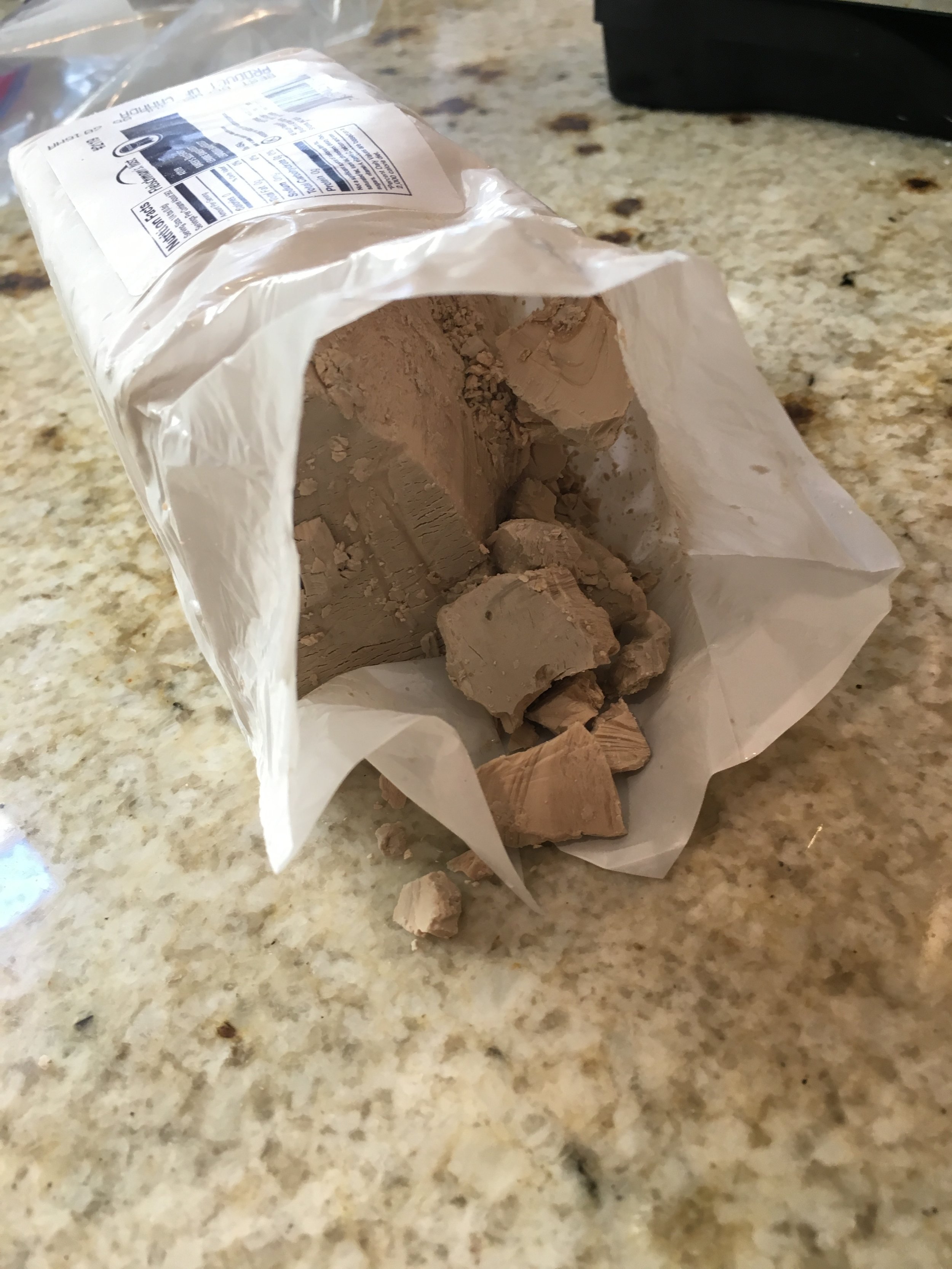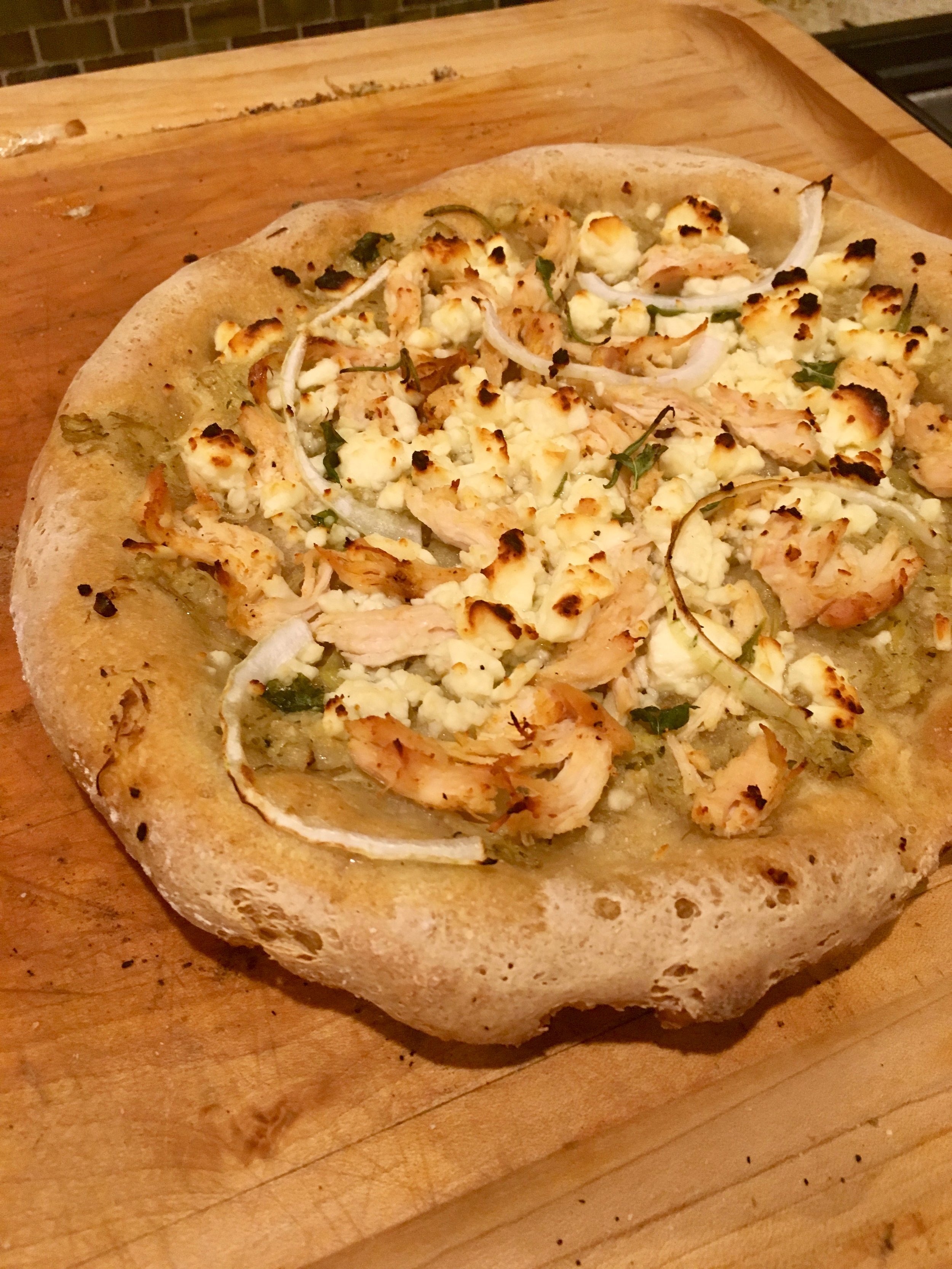Gluten Free Pizza with traditional pizza character!
We are pizza nuts spreading the idea of backyard craft pizza on the BGE. When doing demos we are always asked about opening this world to people who want gluten free pizza. I have been focused on getting traditional pizza just right so I have not put much attention on this challenge. One of my team members is a great cook and has found that a gluten free diet is much better for her. I began looking around for a recipe that was as close to conventional pizza as possible. My criteria:
Conventional pizza cooking method - raw dough with ingredients into the oven.
Has to taste/crunch/chew like a traditional crust
Must be Italian style- ( a Mexican corn tortilla makes a great quesadilla, but it is just not a pizza)
Non gluten-free eaters should appreciate the pizza on its merits.
So this left me with very few options that I could find in recipes. Cauliflower recipes (no offense to those who love them) did not work right structurally, and other combinations were different dishes entirely. I mentioned this challenge to Charlie Augello of E48th Street Market in Dunwoody, GA and he gave me a grin and handed me the solution. Caputo -The Flour of Naples, knows a little bit about pizza, so I gave it a try.
This is an interesting mix of corn starch, rice, and other things. It has the most bizarre feel in the bag. If you walked on a field of it there would be a squeak like a sandy beach. I used half of the bag or 500g of flour (17.6 oz).
I followed Caputo's online recipe, with two small exceptions; For this batch I used baker's fresh yeast instead of dried, and since I would be cooking the dough in 7 hours, I added a little honey to jump start the yeast.
I used a 3X conversion for the fresh to dry yeast, so 9 grams (.3 oz) of fresh yeast is equal to 3g of dried yeast. I added a little water to the yeast to make a kind of slurry and added it to the dry ingredients. (I measure by weight as much as possible. Try a scale, it is so much easier.)
Then, I added the typical other ingredients of pizza crust.
14g Kosher salt
1.5g of Baking soda.
1 tsp of honey
13.5 fluid oz of water
.75 fluid oz olive oil (EVOO)
I mixed the dry ingredients in the stand mixer, and then tried the dough hook. A dough did not work, so I turned the dough onto a surface coated with this special flour and kneaded it by hand for a few minutes. Again it has a strange feel when you squish it.
I formed three dough balls, about 300 grams each, and let them rise on the counter for about an hour. I then put them into the refrigerator for about 5 hours - overnight would have been even better.
An hour before cooking, I pulled the dough balls out of the refrigerator and found that they had risen much more than expected.
They looked great. A slightly different smell than regular pizza dough. (They smelled a little like saltine crackers!) I worked with one to create the first pizza and found that it handled a bit differently. There is very little stretch to the dough. Draping the dough across your hands is not that effective because it lacks that window-pane property from gluten. So, I formed the dough into a pizza shape on a piece of parchment and then flipped it over onto the peel that was lightly coated with the flour. I was careful not to press the dough down onto the wooden peel when arranging it. The pizza below has red sauce, mozzarella, chicken, onion, and a little basil. The raw pizza looked great going into the Pizza-Porta.
I was a little nervous how this would cook so I checked it about every minute. I was amazed to watch the edge start to rise and get a little bit brown after 4 minutes.
When I pulled it out of the oven after about 5 minutes at 600F, it looked fantastic.
The true test would be in the eating, and sure enough it was great. The edge had bubbles and was a bit puffy. The middle was a little bit dense, but crispy. This particular pizza could have cooked just a bit more as the dough on the bottom is a little thicker than a typical pizza. Gluten eaters agreed that it was a little bit more dense than regular pizza, but good, and the gluten-free eater of the bunch said "This is the best pizza I have had since going gluten free years ago" - Yay, we had success!
The second pizza was a different concoction. Artichoke pesto as the base (hence the green tone), topped with shredded chicken, feta cheese and onions with a little basil.
We got this crust a little bit thinner in the center, and cooked it a little bit browner on this pizza.
This pizza was a winner all around. The dough had the chance to rest longer at room temperature before cooking, letting it rise a bit more. The additional cooking time and thinness got the center to cook more thoroughly and provided an even lighter, crunchy crust.
The online recipe needed a little more yeast, and I recommend a longer aging period. From this experience, I highly recommend the Caputo "Free of Gluten flour". Thank you Charlie, for a great gluten-free solution!
Here is the full recipe. Enjoy - Thanks for reading. Cortlandt
Gluten-Free Pizza
500g Caputo "Free of Gluten flour" (Half of the bag)
3 g dry yeast (half a pouch) - use bread-maker yeast if possible (9g of fresh yeast in this recipe)
13.5 fluid oz of water
.75 fluid oz Olive oil (EVOO)
14g Kosher salt (slightly less than a Tbsp) half this amount for table salt
1.5g of Baking soda. (1/4 tsp)
1 Tsp of honey
This will yield 3 Pizza doughs of 300g (10 oz) each







